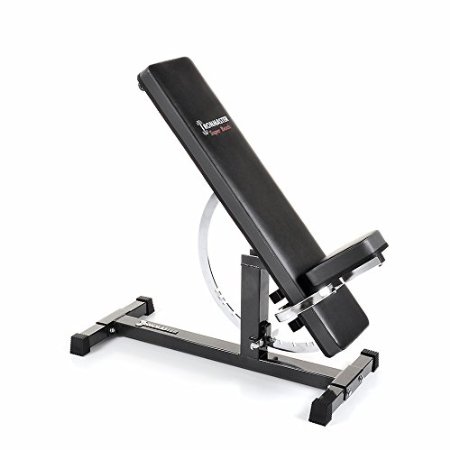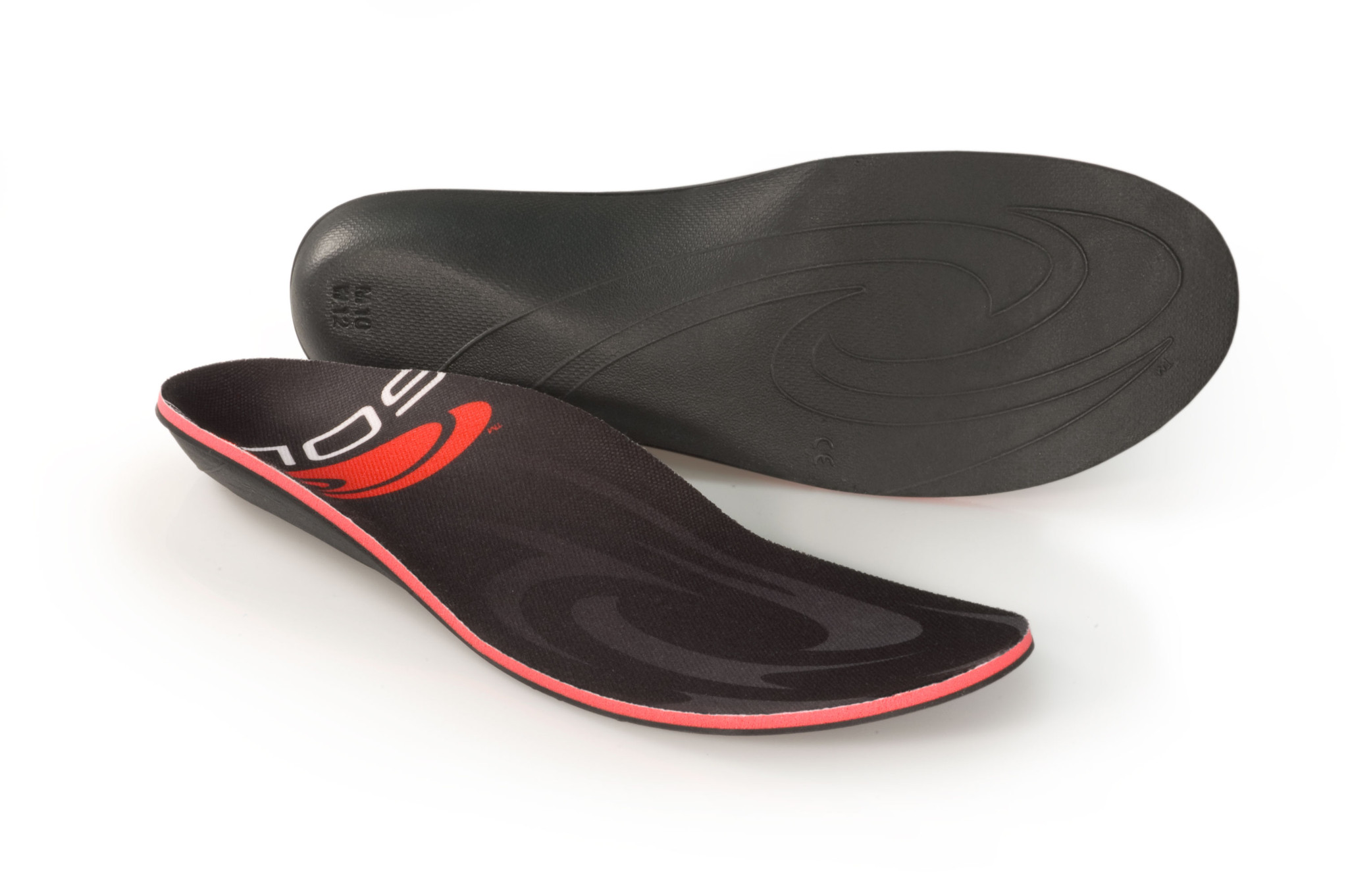As all of you swimmers know, the gear matters more than your performance! Intimidation is the name of the game. (half-joking)
Swim Electronics
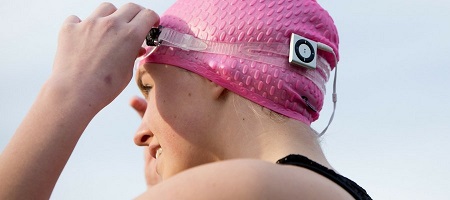
Best Swim Earbuds
- Swimbuds HydroActive (wrap-around band, includes many styles of earbud tips) $90 [Amazon]
- Substitute: Swimbuds $40 [Amazon], or Swimbuds Sport $70 (same as Swimbuds but includes the many styles of earbud tips) [Amazon], or H20 [Amazon]
Note: We prefer the HydroActives, as they stay on better than regular earbuds. We also prefer the wired headphones over bluetooth wireless, as they do not require recharging them.
Don’t get: Swimbuds Fit or Flex (these have the stiff cord over the ear, but don’t seem as great of quality), Swimpod USA’s SwimPod (not as durable), Dacom (doesn’t last long), Bragi Dash Pro (expensive, not durable)
Best Swim Waterproof MP3 Player
Note – Bluetooth is not possible underwater, because water blocks the BT frequency.
- Waterproof iPod Shuffle $250 (refurbished iPod Nano) [UnderWater Audio]
- Substitutes: Underwater Audio SYRYN comes with $60+ headphone purchase Swimbuds Sport $90 (includes many styles of earbuds [Amazon] or (non sport) $60 does not include lots of earbuds) [Amazon]
Don’t get: Finis Duo (charging issues), Waterfi Swimcast (a kickstarter campaign for a headphone and streaming player combo, unstable connection), Tayogo (not durable), Mighty Spotify Player (bad quality, bad battery), Delphin (only decent option for Spotify but still not great of a connection, better to stick with mp3), Speedo Aquabeat (doesn’t last long), Sony Waterproof Walkman (hard to get a seal and bad sound quality underwater), Finis Neptune (no playlist function, bulky), Finis SwimP3 (not reliable)
Best Fitness Tracker for Swimming
Best budget for lap swimming – Fitbit Versa ~$140 [Amazon]. Slightly better and can find better deals than the Garmin Vivoactive HR. Since it is crystal glass and not sapphire, the screen may be prone to crack and breaking. If you’d like more tracking (sleeping, running, biking, hiking), we would recommend the more durable and feature-rich high-end trackers below. The high ends are not necessary for lap swimming only.
Best for triathlons & triathletes – Garmin fēnix 5X Plus, Ultimate Multisport GPS Smartwatch $650 [Amazon]. The current best all-in-one trackers are the Fenix 5 Plus and the Suunto 9 (i.e. Baro). The Fenix tracks HR better than the Suunto 9, and has way more functionality. Suunto is slightly cheaper ($200 cheaper), and more rugged, durable, looks cooler, and better topographic maps. However, the Fenix 5 Plus is overall the better tracker with its interface and accuracy, thus we would recommend the Fenix 5 Plus (5X Plus if you like big watches). We are hoping that Suunto catches up in functionality, but it may be a fruitless hope.
None of the fitness trackers seem accurate for open water swimming. Please see videos such as:
- Youtube: Fenix 5 Plus vs Suunto 9: Openwater Swim Shootout (Failboat) by DC Rainmaker
- Youtube: Openwater Swim Mega GPS Test // Garmin, Suunto, Polar, Apple, COROS by DC Rainmaker
Swim Apparel
Goggles: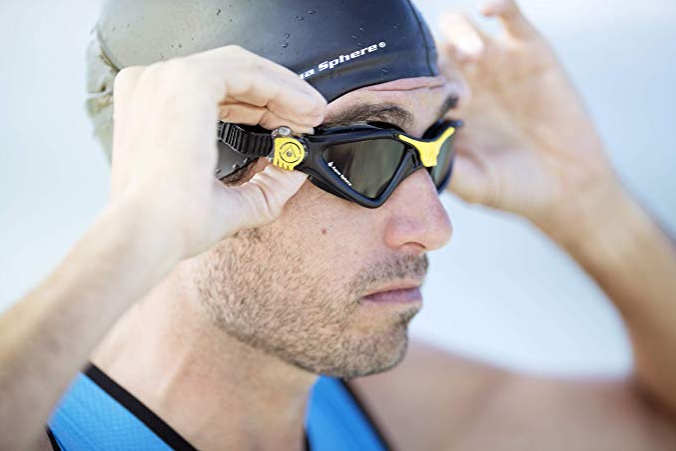
Always get goggles where others cannot see your eyes: for the intimidation factor. In all seriousness, we have reviewed multiple goggles and among other swimmers we know on swim teams.
Most comfortable:
Aqua Sphere Kaiman $40 [Amazon Yellow] . We found them better fit and build quality than every goggles we’ve treid. Also comfortable is the cheap Aegend brand found online, but worse build quality. Mirrored is great for sunlight protection.
Popular Competitive Substitutes:
Speedo Vanquisher 2.0 – Mirrored amber lenses $26 [Amazon Gold/Amber, Amazon Black/Amber] Voted the best goggles online. Michael Phelps used these while being sponsored by Speedo until he developed his own line. His goggles are less durable.
-OR-
Speedo Speed Socket 2.0 – $35 [Amazon Gold] Best substitute to the original “Old School cool” Malmsten Swedish Goggles “Swedes”. The eye cushioning will hurt for a little while until they’re broken in and soften. Swedes are a great budget option for maximum visibility (after taking the time to get a good fit with them), but we prefer the Speedo take on them. Vanquisher is way more comfortable.
-OR-
Arena Cobra Ultra Swimming Goggles, Professional Competitive Swim Racing Goggles $50 [Amazon]
Do not get: Aqua Sphere Kayenne anti fog polarized [Amazon] (recommended by Wirecutter but many users complain and ourselves experienced they are difficult to maintain seal, water leakage)
Smart Goggles [NOT RECOMMENDED]:
FORM Smart Swim Goggles $200 [Amazon]. Although a little bulkier than the Finis Smart Goggles with CIYE tech, we prefer the FORM for more functionality. These goggles were actually found to be more accurate for both distance, lap, and strokes per minute measuring than smart fitness watches. We enjoy tracking our heart rate to make sure we’re getting a hard workout. However, not recommended as they are not as comfortable as other goggles.
Men’s Swimsuit: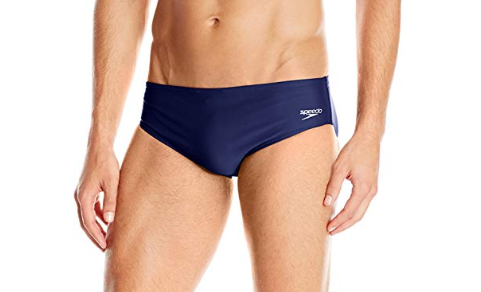
Two options – Brief or Jammers
Recommended Brief – Speedo Men’s PowerFLEX Eco Solid Brief Swimsuit, example color: Navy $25 [Amazon]
-or-
Recommended Jammer – Speedo Men’s PowerFLEX Eco Revolve Splice Jammer Swimsuit $25 [Amazon], or for more stylish but expensive get the Speedo Reigning Light Jammer $45 [Amazon]
Swim Cap:![]()
Protect your hair from the harsh chlorine and other chemicals in pools, reduce drag, prevent hair from entering the pool’s filtration system, and if you have long hair, prevent it from knotting as much.
Differences between Silicone and Latex –
- Silicone is easier to take on and off (won’t snag hair)
- Silicone does not stretch and fit as tight as Latex, would need to try harder to get a good fit putting it on for Silicone. Some people say Silicone caps slip right off.
- Silicone hold their shape better over time, with fewer wrinkles. Latex stretches out and gets less tight over time.
- Silicone lasts longer (Latex is more likely to tear), but more expensive and Latex is cheaper
Recommended: Silicone seems to have more pros, especially for medium to long hair. Latex would be fine for short to no hair,
Recommended Silicone Cap – Speedo Silicone Aqua V Swim Cap $14 [Amazon]
Higher-end Substitute – Speedo Fastskin3 $30 [Amazon]
Recommended Silicone Caps for Long Hair – TYR Sport Long Hair Silicone Swim Cap $12 [Amazon] (TYR gets better reviews than the Speedo for long hair), or substitute Speedo Silicone Long Hair Swim Cap $11 [Amazon]
Silicone stylish with American Flag – Speedo Silicone ‘Flag’ Swim Cap $10 [Amazon]
Wetsuit:
Recommendations are mixed for long sleeves or short – Some people say short sleeves can take on water inside the wetsuit, which is bad. Others say full sleeve is too constricting and inflexible, making it difficult to perform strokes correctly. Be sure to purchase wetsuits only on discount – during a sale (memorial day), or join a club or USAT to get a 20%+ discount code.
Best Brand: Roka is a newer brand, but quickly became one of the top names. We recommend the Comp II (low level wetsuit), as while the more expensive ones offer greater flexibility, they are less durable (e.g. the “X” might be better for competitions only and not practice). [Roka]
Don’t get not durable or overpriced wetsuits, such as: Xterra, BlueSeventy, Sailfish (expensive, popular in Europe), Orca
Coat:
Surffur Original Waterparka – Go on lots of openwater swims or have far walks in the cold to or from your pool? Get this coat to keep you warm. $160 [Surf-Fur]
Swim Gear
Best Swim Snorkel
Would recommend against using a snorkel much – one may be able to use it temporarily to help focus on technique instead of breathing, but in the end it becomes a crutch. It will hold you back from improving your water breathing.
Use a snorkel only as a tool to help focus on streamline, NOT as a crutch for your breathing. Would recommend the Ameo Powerbreather $80 [Amazon]. There are 3 models, the Sport, Lap and Wave editions, with different size tube attachments. Instead of the cheaper “center-mount” snorkels (Finis), this has two valves on both sides “symmetric” style. Pros – Don’t need to clear water with a powerful blow after a flip-turn and you exhale out of the valve near the mouth and inhale through the tubes so you are not re-inhaling your C02.
Best Swim Fins [Kick Only and Dolphin Kick / Butterfly drills]
FINIS Z2 Gold Zoomers – Training Swim Fins $30 [Amazon] – Slightly longer than the regular Gold Zoomers, better for longer swimming (1 hr + instead of 30 minutes), and for training your muscles and endurance. Helps you swim longer in training and teaches you to be more conscious of your kicks. Also, the regular zoomers are heavier and more rigid, less comfortable. Note: These might be found at your local pools, so you may not need to purchase them.
Body Glove Adult Mermaid Linden Monofin $60 [Amazon] – Best monofin for dolphin kicks / butterfly drills. Better than the FINIS Rapid, Luna, Shooter, Wave, Foil (will give blisters). Better than Fin fun brand. FINIS Luna does not give blisters but does not give as much propulsion, it’s more for the mermaid feel that speed and performance.
Best Swim Paddles or Pull Buoys [Pull Drills] and Kickboard [Kick Drills]
Swim paddles and pull buoys are good for “pull” drills, letting you pull more water but requiring more force. Kickboards, for “kick” drills, let your upper body stay afloat while focusing on only kicking.
Finis Agility Hand Paddles $20 [Amazon] – To help increase both pull strength and technique. Most people (both male and female) use a medium.
Tech Paddle (Early Vertical Forearm Trainer) $34 [TechPaddle] – These help your forearm form, only by occasional usage for 5 minutes.
Note: All of these might be found at your local pools or practice teams, so you may not need to purchase them.
Open Water Swimming – Safety Buoy
Order a large buoy from ISHOF (International Swimming Hall of Fame), they even have variations with dry storage! [ISHOF]
Chlorine Shampoo and Conditioner
On top of swim cap usage, the following anti-chlorine shampoos and conditioners are recommended if needed – UltraSwim Chlorine-Removal Shampoo [Amazon]. The shampoo is probably more important. For a conditioner, the UltraSwim conditioner is watered down, thus would recommend a different one – Ion Swimmer’s Leave-in Conditioner [Amazon]
Swim Technique Tips
- Swim 3+ times per week to improve, focusing on training frequency (often), instead of duration (time length), for example 30 minutes everyday instead of 1 hour every other day. And don’t get discouraged by getting tired or having trouble breathing, swimming is hard. Swimming frequently will add to your fine muscle gains and prevent them from disappearing; and these help you balance your body in the water so you can glide instead of be thrashing.
- Get technique advice (get lessons or ask for help)
- Try to keep rest times below 30 seconds, using the clock
- Stay in the water for longer periods instead of getting out to rest, in order to build your core abdomen muscles that will help with breathing. You will get less anxious about breathing as you improve, and in turn getting more relaxed (using less energy) and gain more endurance.
- You will swallow water and get it in your nose, be patient. You will improve at preventing this.
- Learn to relax as you swim, instead of being tense to nail the technique. However, this advice might not be useful, only possible once competency is achieved.
- Keep records of your starting point so that later you can gauge how you’ve improved – Weight, resting heart rate, your swim distance and speed (but try to focus on distance). Alternatively, could get a smart fitness device above.
Other notes:
Weight loss can be difficult to achieve with swimming. Being out of breathe does not always equate to swimming hard and burning lots of calories. In addition, swimming, unlike most other sports, is an appetite stimulant, so one must be careful not to overeat, especially right after swimming.
Pool lane etiquette:
Join the lane with least number of people. If there is only one other person in the lane, the lane can be split with each person taking half the lane. Assume circle (counter-clockwise) swimming, unless you agree to splitting or it seems like they start splitting. Once a third person joins, circle swimming must start. Swimmers resting at lane end should stay as far to either side of the lane as possible.
Technique Tips and Tips by Stroke Type
Note: Everyone has different issues to troubleshoot, but this is a general progression guide of tips. Generally, focus on one issue at a time until it feels comfortable and natural. And don’t think that only drills are for working on technique; work on technique in every set, all of the time. Solid technique is harder to keep in the middle of big routines, and especially on race day!
Firstly, learn to Breathe – The key is exhaling underwater continuously. Exhaling continuously lets your abdomen stay relaxed, in turn allowing your other muscles to stay relaxed instead of tense. Very important.
Freestyle –
- Focus first on rotating in order to breath, and don’t lift your head up out of the water, keep one goggle still in water and one out to get air. The head should stay in line with the body, 30-45 degree angle forward, only rotated to the side. The wake created by rotating the head creates a pocket of low water, allowing a breath.
- Rotate your whole body at the waist (30 degrees), not just the torso. Even your legs should be paddling slightly sideways while your body is sideways, perpendicular to the pool floor. You could even do a drill where you only kick with your legs (hands at your sides), and you rotate on each side.
- Stretch your arm as far out forward as possible on each stroke. Don’t worry about strength or speed too early, just get used to stretching and rotating your body.
- After you’re comfortable stretching and rotating your body, focus on keeping your elbow high in the water, freezing the water and torquing your body past your arm, instead of just pulling the water behind you. This will let you focus on exerting more power.
- Explanation: Once your arm goes out front of your body, your elbow should stay at the surface of the water while lowering your forearm and hand into the water and anchor it in place. Then pull your body past that anchored forearm and accelerate down the pool. The entire forearm and hand must be used as a single unit to provide the most propulsion. The surface area of your hand + your forearm, is more than just your hand. Using the entire forearm and hand as a paddle minimizes wrist flexion, and when maintaining a “high elbow” pull, this utilizes the lats and upper back large muscles, and places less stress on the rotator cuff and deltoids. This pulling motion also coincides in nicely with the rotation of the hips. When your arm is in the water anchored and pulling, that same side hip is rotating up as the arm pulls back. Always pull with your forearm and hand leading the motion, never dropping your elbow or leading the pull elbow-first.
- Follow through with the pull until the end (hand touches the surface of the water). At that point, don’t keep the arm straight anymore. Keep your elbow high and relax the forearm for an easier and more energy-efficient recovery.
- Try to breath bilaterally in a 1:3 rhythm (both sides equally). This will improve your symmetry and balance in the water, reduce drag, have you swim straighter and reduce the chance of shoulder injury.
Video examples: Thorough training film, Rotation and rhythym Phelps example, Example 2, Hackett High elbows example, Alex Popov example, Ian Thorpe legkick
Minor Freestyle troubleshooting tips:
- Don’t squeeze your hands tight to make super taut paddles or cup your hands
- Don’t tense hands to make sure you place them in the perfect spot in the water, instead extend your arm forward and let it drop
- Don’t let the hands wander and wiggle around out front (either right after entry or right after the catch) because it delays and leads to gliding and coasting instead of constant thrust down the pool. Also goes for pushing downward too far in the pull.
- Once your hands reach your waist, again, pull your arms up by the elbows.
- To improve kicking, try making fists with the toes. This helps many people not kick as much, consequently moving more smoothly. Not intended to be a permanent change. Alternatively, try zoomer fins.
- Sprinters pulls deeper with their hands than distance swimmers – but generally not different form
Video Tips – Auburn University: Swimming Faster Freestyle
Backstroke – The head should not move at all.
Breaststroke – Don’t move the head back, just have the head follow the hands.
Ready. HUP! – Training Session Plans
Sessions are made up of sets.
Beginner to 1mile – Source: Ruth Kazez – 1mile training
Example session plan for each week (minimum 3 sessions per week):
200 (adding an extra 200 for each next concurrent week, up until 1600 for 1 mile. this would take 8 weeks)
4 x 100 (rest for 8 breaths between each)
4 x 50 (rest for 4 breaths between each)
Experienced Swim Team Session
Warm-up: SKIPS – Swim 200, Kick 200, IM 200, Pull 200, Swim 200. (1000 Total)
Main Set: 4x200s IM/Fr, and 3x{4x100s} first pull, second swim, third fins and paddles (2000 Total)
-OR-
Main Set: 3x{200 free, 2×100 IM, 3×50 Swim} (1650 Total)
-OR-
Main Set: 4x{300 free, free, IM (each third lap)}, and 5×100 switching between backstroke-pull and breast-pull
-OR-
Main Set: 400 IM, 5×200 free, 10x50s on a minute
Super Set: 50s starting at 1:20 and going down by 5 seconds each 50. (e.g. 500 Total if you get to 0:40)
Miscellaneous Drills and Drill Terminology
- IM – Individual Medley (all four strokes together in order Butterfly, Backstroke, Breaststroke and Frontcrawl)
- Kick – Legs only (no pulling)
- Pull – Arms only (no kicking)
- U/W – Underwater (usually refers to kicking, using Dolphin kick)
- Duck – Keep the elbows tight to your sides and move the forearms back and forth (like duck legs) to propel yourself through water
- Ladder – Decreasing lengths e.g. 4×100; 4×75; 4×50; 4×25.
- Pyramid – Increasing lengths then decreasing back down, e.g. 4×50; 3×100; 1×200; 3×100; 4×50
Intensity-Related:
- Negative Split – Go faster for the second half of the set distance than the first half
- HVO or High Velocity Overload – Swim part of the length (no more than 15m) at full speed without breathing, rest of the set distance swim easy
- Sprint – All out as fast as you can go, breathing as little as you can.
- Steady – Swimming at a pace which is easily maintained (not easy or too hard, aiming for consistency of pace)
- Swim Down (or Regeneration) – Swimming slowly and steadily at the end of the session (intense) to warm down
- Easy – Usually swim down or warm up, a slow easy stroke focusing on stretching out the stroke and warming up or down.
- Descending or Ascending – Getting faster (i.e. the time taken reduces), or Getting slower (i.e. the time taken increases)
Other Terminology:
- Interval or RI or Rest Interval – How much rest (usually in seconds) you get after a set swim e.g. 8 x 50m FR RI 20s (20 seconds rest after each 50 metres Freestyle)
- Stroke Count or SC – Number of strokes per 25m or 50m (FC and BC every 2 arm pulls – a cycle – BR and Fly every stroke)
Stroke-Specific Drills
Butterfly (Fly):
1. No arms, hands back at sides, kick head down, kick head up.
2. One arm strokes, the other remains forward, breathe to side or forward, Switch arms at wall.
3. Lots of kicking, with and without board, with and without fins, because
propulsion is easily 30% from kick.
Backstroke (Backcrawl or Back):
1. Roll onto your side, even kicking sideways. One arm straight
above you in water, the other straight toward your feet. Take one
stroke, roll to other side with NO twisting. Take one stroke with other
arm. Kick at least six times and switch again.
Breaststroke (Breast):
1. Swim with dolphin (butterfly) kick to undulate into the stroke.
2. Don’t kick too wide. Touch heels together to get the full kick’s range of motion.
3. Try breathing immediately or at the last moment.
Freestyle (Front Crawl):
1. One arm, switch at wall.
2. Catch-up – One hand stays at full stretch ahead until the other meets it then it begins the stroke.
3. Fist swimming – Feel water resistance from whole arm.
4. Trickle (or Fingertip Drag or Ripple) – Skim (drag) the water in recovery with fingertips while elbow is held high. This helps cure a wide-arm recovery, as the hand should be close to the surface in recovery.
5. Hypoxic swim – Reduce number of breaths, more easily done with a pull-buoy.
6. Doggy Paddle or Underwater recovery or Zip-up – Slide hand forward close to torso.
7. Elbows High – Drill where as it sounds on FC you keep the elbows bent and high out of the water on the recovery.
8. Salute – Drill where the hand touches head prior to entry on FC.
9. Hesitation is a delay at the end of the pull while your other arm remains up front.
10. Tarzan (or Heads Up) – Holding your head above water, valuable for triathlons.
11. Lungbuster – Don’t breathe for 5 strokes, then breathe, then don’t for 7 strokes, then breathe, then don’t for 9 strokes, then breathe. Repeat.
Diving Starts (Source: Olympic coach Jack Bauerle)
The start should be an explosive movement. Start comfortable on the block, front toes wrapped around the front of the block for a little extra power, and back foot on the wedge (both legs should be in a straight line, but the back leg shouldn’t be directly behind the front leg). At the “Ready”, when you arms are down, make sure your arms are already flexed and not loose (so you don’t need to start flexing during the start). Don’t anticipate the start, just react to it, getting off the block as fast as possible. Drive off the block with your back foot, then slip in the water (not fight the water). Try to go through one hole – where the hands go, the head goes, the body goes and the feet go.
Butterfly and breaststroke has a deeper start than freestyle. Backstroke is an inverted dive on your back.
Flip Turns (Source: Olympic coach Jack Bauerle)
Swim into the turn with plenty of speed and think about the turn before you get there, so you’re hitting it right on a stroke.
Butterfly – Grab the wall with both hands, start with one hand going back behind the head. Then go. 5-6 dolphin kicks, don’t breath on the first stroke to maintain speed.
Breaststroke – Similarly, grab the wall with both hands, start with one hand going back behind the head. Then go. 1 dolphin kick for a long length, then one breaststroke to come to the surface.
Backstroke – Be aware of where you are so you aren’t looking around. When getting closer to the wall, do a freestyle turn on your stomach. Do a flip, then kick off the wall. Do 5-6 or even 7-8 dolphin kicks from the waist down (quads and calves), don’t move upper body.
Freestyle – Make sure right before you flip you are coming in right off the stroke. Chin to chest and make sure your feet come over real fast. Place feet on wall shoulder width apart. 4-5 dolphin kicks, then come up and don’t breath on the first two strokes.
Triathlon Training Plans
Train in each discipline every week, as follows:
- Swim 3x/wk 30mins – Concentrate on over-distance one day (swimming more than the race distance), drills another, and speed the third day (for speed, break the race distance into smaller segments that can be swum faster – much faster). On non-speed days, change stroke as often as necessary to keep from stopping. Backstroke allows you to breath and using your legs less can be helpful at times (quads are the biggest oxygen sink). Every week, reduce the number of non-crawl laps until you can swim 30 minutes crawl (will take max 6 weeks).
- Bike 2x/wk 1hr – Vary for biking as swimming above. Once per week, do hills.
- Run 3x/wk 30mins – Once per week, do hills. Run 5-10mins, walk 15-20mins, then run remaining minutes. Every week, increase length of run and walk & run remaining minutes. Will take max 6 weeks to be able to run 30 minutes.
Swim Science: Myths and Facts
Breathing and Technique – Breath holding does not increase lung capacity. The physiological result of breath-holding is an increase in CO2 levels, not lung capacity, thus this type of training does not improve anything. Instead of aiming to “increase pain threshold,” make your goal to increase the distance and speed you can swim without discomfort. Instead of believing breathing hurts stroke efficiency, work on making breathing as seamless and efficient as possible (even breathing as frequently as possible, rather than avoiding it). Stroke can be improved – rather than interrupted – by the act of breath-taking. The benefit is obvious – hard-working muscles work better, and “complain” less, when they get all the oxygen they need.
Practice breathing by “Nodding”: In between breaths, move your head as if you would be taking a breath, but instead don’t. Alternate between nodding and breathing between strokes. For each 25, try focusing on different visual info when “nodding” –
<ul><li>”Pool” – whatever objects you notice but don’t linger</li>
<li>”Shimmer” – look at the underside of the water – a hair further than “I Spy”</li>
<li>”So Near” – look at air just above the water – a hair further than “Shimmer”, should be close to being able to take a breath</li>
<li>”Wave” – a little further, look at the wave your head’s movement creates, without taking a breath</li></ul>
